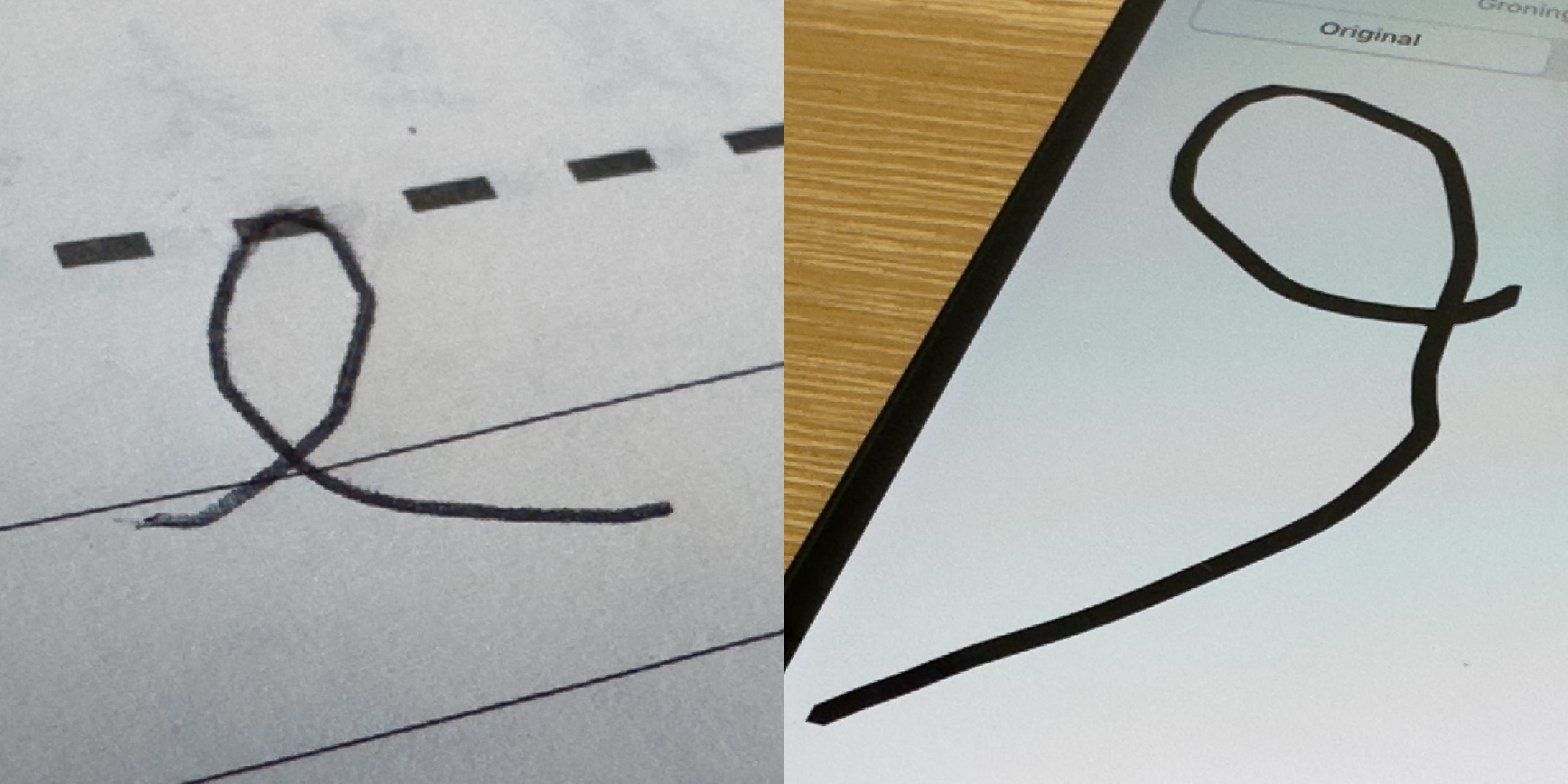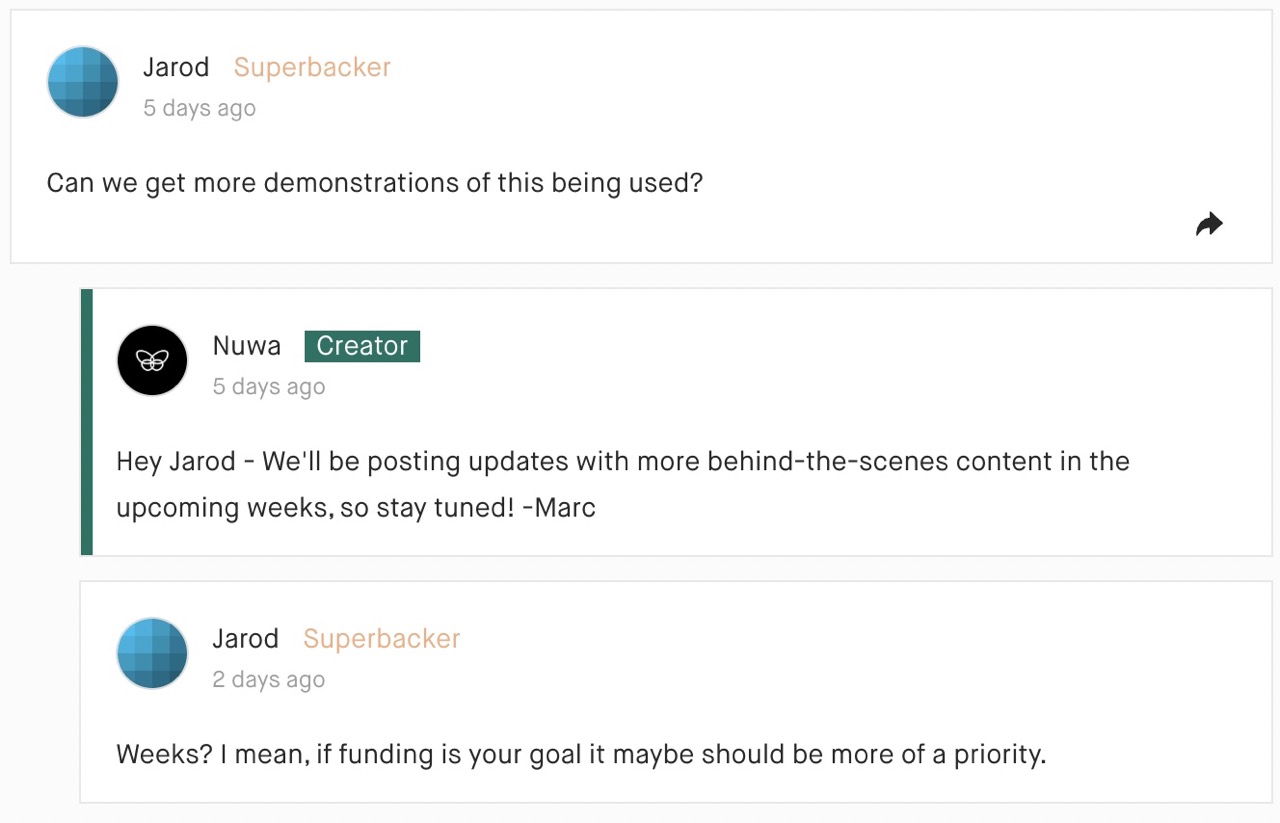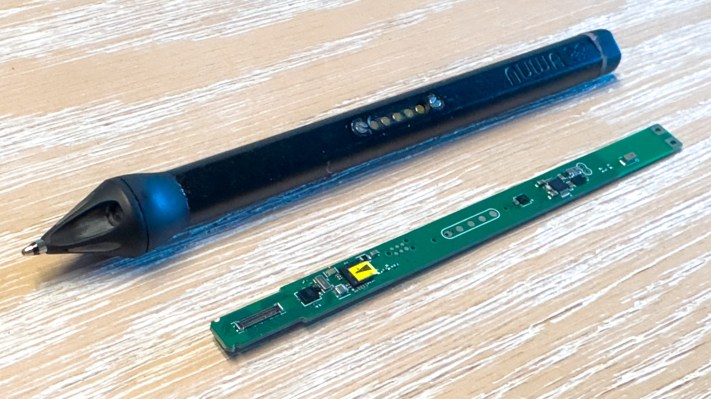Back at CES in Las Vegas in January this year, I previewed the Nuwa Pen; a three-camera-containing ballpoint pen that promises to turn your scribbles into digital notes and then apply OCR and AI smarts to pull out the most pertinent data. Write “Meeting with Chris at 6pm Tuesday” on a Post-it and the promise is that the pen will pull out the relevant data and create a calendar event. In late April, I met up with the company’s founder and had a chance to try it out. When I did, I realized that the product I saw at CES did not produce the results the company was showing at the trade show. This week, the company launched a Kickstarter campaign that shows its vision, but doesn’t appear to reflect the current status of the product fully.
At CES, I was told that the company had a fully functioning prototype, and was shown a Post-it with a digitized image:

The “demo” the company showed me at CES was similar to this image, and illustrated how easily the drawing on the Post-it can be digitized. It now transpires that the demo wasn’t done with the pens that were on display. Image Credits: TechCrunch / Haje Kamps
When I got to try the pen out four months later, it turned out that the demo I was shown wasn’t quite what it seemed to be. On April 27, the company’s product was able to capture very simple glyphs accurately, but only a single stroke at the time, and drawing a little house on a Post-it note would be comprehensively beyond the pen’s reach.

A curl as written on the left, and as captured on the right. It showed up mirrored in the app, but at least had roughly the right shape. Image Credits: TechCrunch / Haje Kamps
The issue, for me, is that the Kickstarter project doesn’t reflect Nuwa Pen’s current product status
In April, Marc Tuinier, Nuwa’s founder and CEO, admitted that the prototype the company brought to CES was “a rush job,” and that the company only had it working partially. He suggested that the hardware was locked at this point, and that the next two to three months would be largely around optimizing the algorithms.
Nuwa told me that it has the prototype working properly in “chunky boxes,” but that the final integration step of putting the tech into the form factor of the pen shown in the pictures isn’t complete yet.
“The model we used to draw and digitize the pages for the video is the bulkier version that had the chip on a dev board so that we had more control over tweaking the software,” Tuinier confirmed in an email to TechCrunch today.
That makes a lot of sense; that is how product development works: You create the design and the tech separately and marry them together later in the development process. I got into some of how that process worked in an article last month.
Misleading at best
The issue, for me, is that the Kickstarter project doesn’t reflect Nuwa Pen’s current product status — in particular in the crowdfunding project’s video.
In the video “Nuwa Pen : The Journey so Far….How we got here?” at about 1 minute and 10 seconds in, you can hear Tuinier say “So once you’re done writing, you can hold the Nuwa Pen up close to your app, and you can see an exact digital representation of what you just wrote.” The problem is, as far as I understand, the company is not currently able to do that with that prototype. Even in the video the company provided to TechCrunch, “exact representation” may be a bit of a stretch.
Instead, this was the status quo in April:

I wrote “write” and “test” and drew a shape. At the top, you can see what the pen and app captured. As you can also see — there’s virtually no similarity between my awful handwriting and what the Nuwa Pen captured. Image Credits: TechCrunch / Haje Kamps
I’m finding it hard to reconcile that a video called “the journey so far” contains a lot of “we will be able to” statements rather than an accurate representation of, well, the journey so far. On the one hand, as a pitch coach and storyteller, I understand the importance of storytelling. And as someone who was spectacularly bitten by a crowdfunding hardware project I tried (and failed) to deliver myself, I also believe in the importance of being honest about the delta between what is real and what’s part of the product vision.
This is challenging for a number of reasons.
This sort of thing is, incidentally, also the reason why I very rarely cover Kickstarter campaigns here on TechCrunch. On a basic level, Kickstarter itself says that “hardware and product design creators are required to show working prototypes of their projects” and requires that product creators “show backers the development of your product, both honestly and transparently.” I am definitely not the arbiter of whether Nuwa Pen is falling foul of Kickstarter’s rules here, but I believe it’d be hard to argue that this Kickstarter campaign is good-faith honesty and transparency.
Nuwa Pen argues it can deliver
I asked the company whether it was worried that what it was trying to do might prove to be impossible.
“We’re using a consistent hardware tech stack and fine-tuning the embedded software to flash it (integrate it) on the compact version I showed you. Internally we have a development version with the cameras being operational – they are crucial but take significant effort to perfect. So while the version I showed you is smaller, the internals are consistent,” Tuinier explained in an emailed comment today, after the Kickstarter campaign went live, and I asked him whether he perceived the risks were significant.

The Kickstarter campaign’s backers noticed that none of the materials provided by Nuwa on the campaign page shows the product actually in use. Image Credits: Kickstarter / Nuwa Pen
“The difference is that we have more control and flexibility with the larger version, particularly regarding camera development. As for financial risks, we did face some uncertainties early in the project, but our showing at CES helped to mitigate those. We’re now adding to our funding through Kickstarter to extend Nuwa Pen’s future. In this same line of thought, we also needed to update our delivery timeline, which was more in line with our development. We now aim to ship the first batch in December and the Kickstarter batch in March, which is later than initially expected since the miniaturization was a challenge we’ve managed to overcome,” Tuinier said in the statement. “We have completed most of the complex tasks and developed a functional pipeline in controlled environments. The development has been accelerating, which helps us to predict our timeline with much more accuracy. So yes, the product will function as well, as shown in the video. The key challenge we’re working on is the time needed to get the embedded software more compact.”
The team provided a photo of the version of the pen that was used to create the results shown in the Kickstarter video, and asked that I not share it more widely, citing that “it exposes our MCU [Microcontroller], which isn’t public information.” The photo shows a pen with a ribbon cable running to a box the size of a deck of cards, which is then connected to a laptop with a USB cable.
I also asked the Nuwa Pen team to record a video that shows the current version of its pen. A couple of days later, the team provided the below video, which appears to show a prototype of the pen running wirelessly and connecting to the app. It briefly shows the handwriting as captured, and shows that the company has made significant progress since I tried the device myself in April. It appears that the pen is now able to handle multiple pen strokes, and that the capture is robust enough to recognize the pen strokes as the word “hello.” It is still a ways away from being as accurate as is shown in the Kickstarter video.
Backers need transparency
And herein lies the crux; the Kickstarter videos are full of sleek, extremely well-produced videos, photos and product visions, with nary a developer kit in sight. Doubly frustrating; there’s a Risks and Challenges section at the bottom of the campaign that lists supply chains, “customs and shipping regulations” and “pandemics, natural disasters, or other unforeseen events” as risks, but fails to mention that the product doesn’t currently work as shown in the videos. Which, to me, seems like the biggest risk of all.
Don’t get me wrong. I know product development can be very hard indeed, and that it’s a long road from idea, via prototype, to manufactured product. If and when the Nuwa Pen works the way the company envisions, I think it’ll be a cool product for those who still write with a pen on pieces of paper. As a startup, though, it’s a better idea to be transparent with Kickstarter backers — it turns out that a lot of the time, they don’t mind that a product is in development. The other alternative is to delay a crowdfunding campaign until a product actually works as shown. The in-between approach Nuwa Pen chose is misleading at best — and something far more nefarious at worst.
